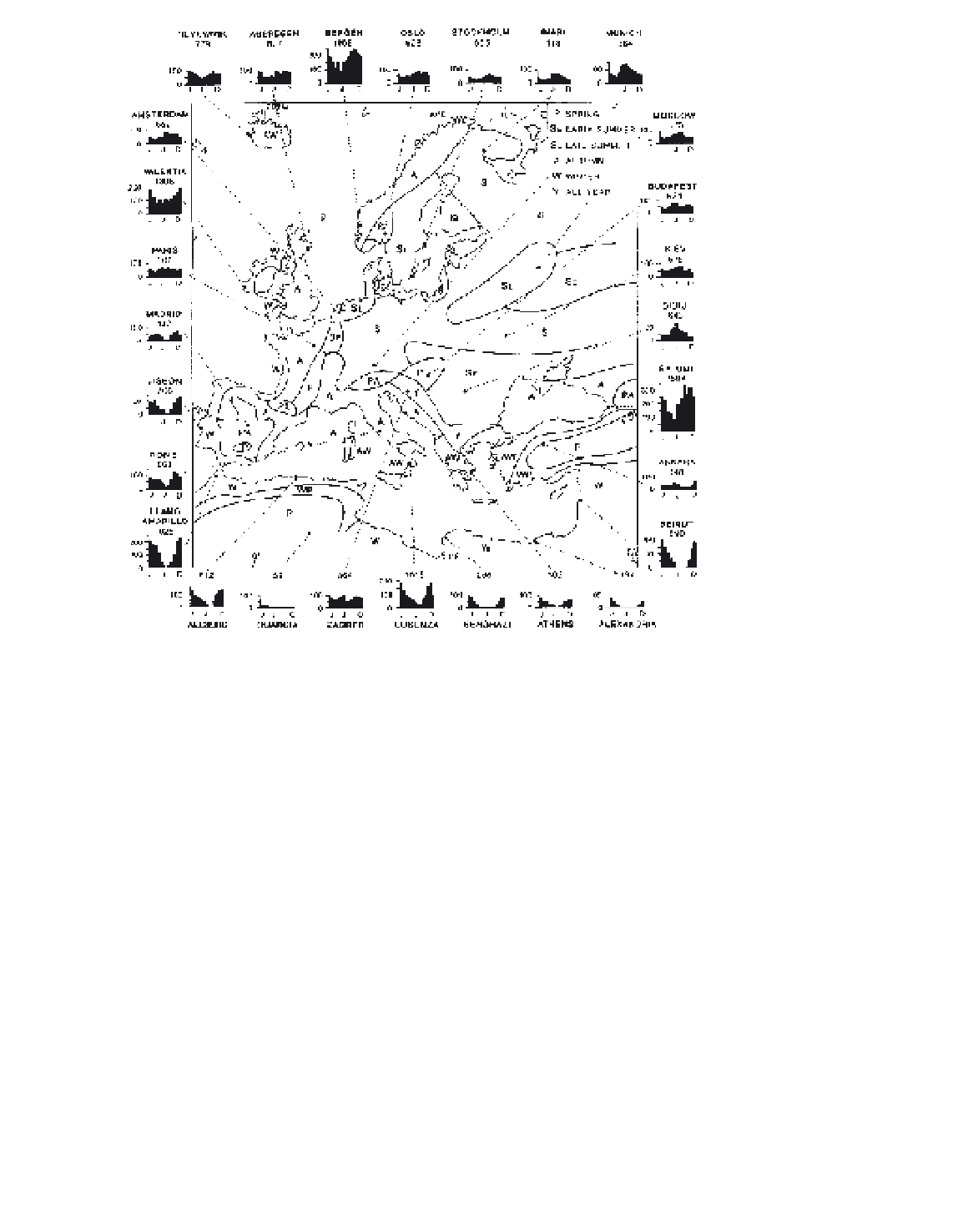Geoscience Reference
In-Depth Information
Figure 10.29
Seasons of maximum
precipitation for Europe and North
Africa, together with average monthly
and annual figures (mm) for twenty-
eight stations.
Sources
: Thorn (1965) and Huttary
(1950). Reprinted from D. Martyn
(1992)
Climates of the World
, with
kind permission from Elsevier Science
NL, Sara Burgerhartstraat 25, 1055 KV
Amsterdam, The Netherlands.
rainfall intensities occurred in the vicinity of west-
facing slopes in Algeria, such as at Tamanrasset (46 mm
in sixty-three minutes) (Figure 10.30), El Golea (8.7
mm in three minutes) and Beni Abes (38.5 mm in
twenty-five minutes). During the summer, rainfall
variability is introduced into the southern Sahara by
the variable northward penetration of the monsoon
trough (see Figure 11.2B), which on occasion allows
tongues of moist southwesterly air to penetrate far north
and produce short-lived low-pressure centres. Study
of these Saharan depressions has permitted a clearer
picture to emerge of the region. In the upper troposphere
at about 200 mb (12 km), the westerlies overlie the
poleward flanks of the subtropical high-pressure belt.
Occasionally, the individual high-pressure cells contract
away from one another as meanders develop in the
westerlies between them. These may extend equator-
ward to interact with the low-level tropical easterlies
(Figure 10.31). This interaction may lead to the devel-
opment of lows, which then move northeast along
the meander trough associated with rain and thunder.
By the time they reach the central Sahara, they are
frequently 'rained out' and give rise to dust storms, but
they can be reactivated further north by the entrainment
of moist Mediterranean air. The interaction of westerly
and easterly circulation is most likely to occur around
the equinoxes or sometimes in winter if the otherwise
dominant Azores high-pressure cell contracts westward.
The westerlies may also affect the region through the
penetration of cold fronts south from the Mediterranean,
bringing heavy rain to localized desert areas. In
December 1976, such a depression produced up to 40
mm of rain during two days in southern Mauretania.
5 Australasia
The subtropical anticyclones of the South Atlantic and
Indian Ocean tend to generate high-pressure cells
which move eastward, intensifying southeast of South
Africa and west of Australia. These are warm-core
systems formed by descending air and extending
through the troposphere. The continental intensification
of the constant eastward progression of such cells causes
pressure maps to give the impression of the existence of

